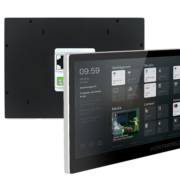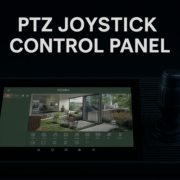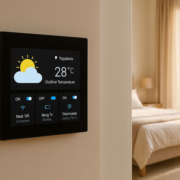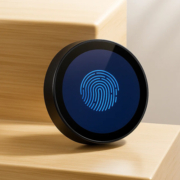What Are Smart Lighting Controls?
Smart lighting controls are an essential component of modern home automation systems, enabling homeowners to control and optimize their lighting setups in ways that were once only imagined. These controls go beyond traditional light switches and dimmers, offering advanced features like remote control, automation, mood settings, and energy management. As the demand for smarter homes continues to rise, smart lighting has become a key player in enhancing convenience, security, and energy efficiency.
In this article, we’ll explore what smart lighting controls are, how they work, and the benefits they offer to homeowners and businesses alike.
What Are Smart Lighting Controls?
Smart lighting controls refer to a range of devices and technologies that allow users to manage the lighting in their homes or businesses in a more convenient, efficient, and flexible way. These controls can be integrated with other smart home systems and can be accessed and managed through various platforms, including smartphones, tablets, voice assistants, and even automated schedules. The key features of smart lighting controls typically include:
- Remote control and automation: Smart lighting systems can be controlled from anywhere, whether you’re at home, at work, or on vacation.
- Voice control: Many systems are compatible with voice assistants like Amazon Alexa, Google Assistant, or Apple Siri, allowing users to control their lights with simple voice commands.
- Energy efficiency: Smart lighting can automatically adjust brightness levels based on time of day, occupancy, or room usage, helping reduce energy consumption.
- Customization and ambiance control: Create the perfect atmosphere by adjusting the color, brightness, and timing of your lights for different occasions or moods.
How Do Smart Lighting Controls Work?
Smart lighting controls operate using a combination of hardware and software. The hardware typically consists of smart bulbs, light switches, and sensors that connect to your home’s Wi-Fi network or a hub that communicates with all the devices. Here’s a breakdown of how they work:
- Smart Bulbs: These are LED bulbs that can be connected to a Wi-Fi network or Bluetooth. They often have customizable features such as color-changing options, dimming capabilities, and remote control functions.
- Smart Light Switches: Unlike traditional mechanical switches, smart light switches can be controlled remotely through a mobile app, voice assistant, or automated system. They can also be integrated with other smart devices like thermostats, security cameras, and door sensors to create custom lighting scenes.
- Sensors: Motion, occupancy, and daylight sensors can detect when a room is occupied or when natural light is sufficient. These sensors can automatically turn lights on or off based on the detected conditions, contributing to both convenience and energy savings.
- Smart Plugs: These allow you to turn regular lamps or light fixtures into smart lighting systems. By plugging in a lamp or light fixture into a smart plug, you can control it remotely through your smartphone or voice assistant.
- Hubs and Bridges: Some smart lighting systems require a central hub or bridge to connect and manage all the devices within the network. This hub communicates with the smart bulbs, switches, and sensors, allowing you to control them all from a single interface.
Key Features of Smart Lighting Controls
- Remote Control
- One of the most appealing features of smart lighting is the ability to control your lights remotely. Whether you’re at home or away, you can turn your lights on or off, adjust brightness, or change colors directly from a smartphone app or voice assistant.
- Voice Control
- Integration with voice assistants like Amazon Alexa, Google Assistant, and Apple Siri allows users to control their lights with simple voice commands. For instance, you can say, “Alexa, turn off the living room lights,” or “Hey Siri, set the kitchen lights to 50% brightness.”
- Customization and Scenes
- Smart lighting allows users to create personalized scenes for different occasions, such as a movie night, dinner party, or relaxation mode. You can adjust the color and brightness of the lights to set the perfect ambiance for any activity or mood.
- Scheduling and Automation
- Smart lighting can be programmed to follow specific schedules, turning lights on or off at set times of the day. You can also set up automated routines, such as lights turning on at sunset or off when you leave the house.
- Energy Efficiency
- By automatically adjusting the lighting based on occupancy, natural light, or time of day, smart lighting helps reduce energy consumption. Dimming lights when they are not needed or switching them off when rooms are unoccupied can lead to significant savings on energy bills.
- Integration with Other Smart Devices
- Smart lighting can be integrated with other smart home devices to create a cohesive, automated system. For example, you can set your lights to turn on when your smart security camera detects motion, or sync your lights with your smart thermostat to adjust the lighting when the room temperature changes.
Benefits of Smart Lighting Controls
- Convenience and Comfort
- With the ability to control lights from anywhere and customize settings for various activities, smart lighting offers a level of convenience that traditional lighting systems simply cannot match. Whether you’re coming home after dark, getting up in the middle of the night, or hosting a gathering, smart lighting allows you to effortlessly adjust your lighting with the push of a button or a voice command.
- Enhanced Security
- Smart lighting controls can be programmed to mimic your usual patterns, such as turning lights on at specific times of the day or when motion is detected, giving the impression that someone is home even when you’re away. This can help deter burglars and increase home security.
- Energy Savings
- One of the most significant advantages of smart lighting is its energy efficiency. By automating lighting schedules, adjusting brightness levels, and utilizing motion sensors, smart lighting systems can significantly reduce electricity consumption. Many systems even provide energy reports to help users track and optimize their usage.
- Sustainability
- Smart lighting often uses energy-efficient LED bulbs that last longer and consume less power compared to traditional incandescent or fluorescent bulbs. This contributes to sustainability efforts by reducing overall energy consumption and lowering the carbon footprint.
- Increased Home Value
- Homes equipped with smart technologies, including smart lighting, are often considered more modern and desirable. Installing a smart lighting system can increase your home’s appeal to potential buyers, enhancing its market value.
Smart lighting controls represent a huge leap forward in how we interact with and manage our lighting systems. They provide unmatched convenience, energy efficiency, security, and customization, making them an essential part of any modern smart home. Whether you’re looking to enhance the ambiance of your living room, save energy, or improve security, smart lighting controls offer an easy and effective way to transform your home lighting experience.










